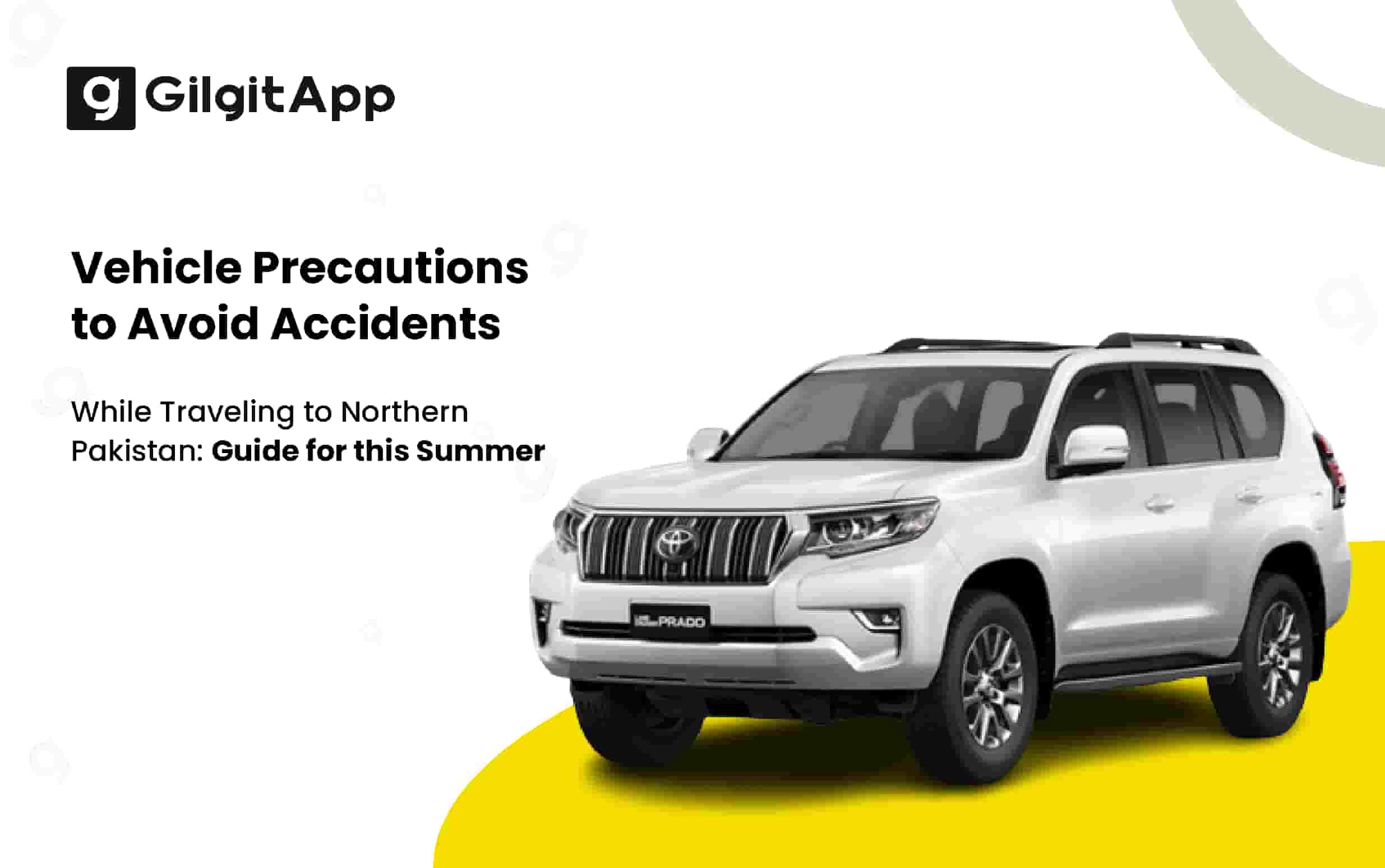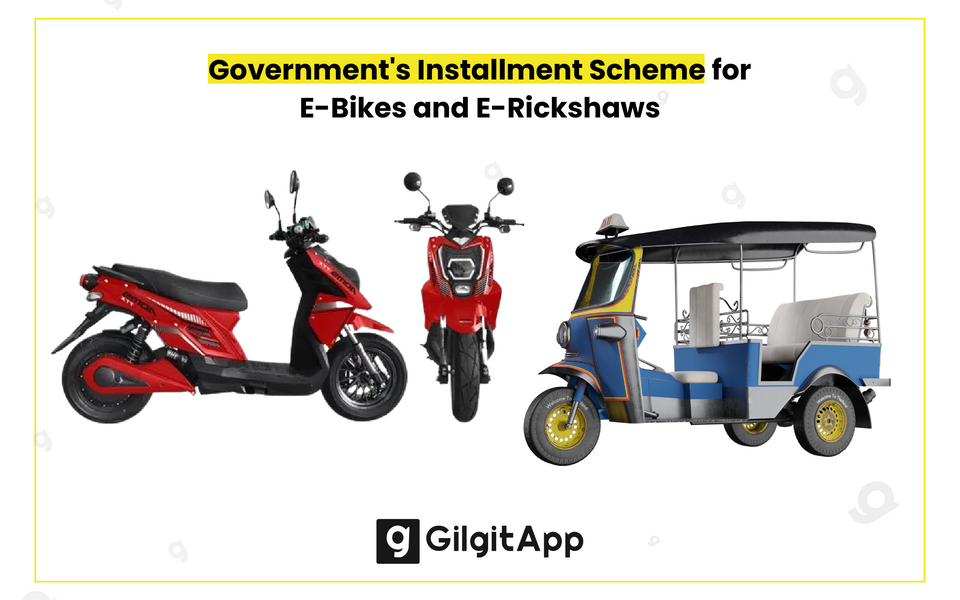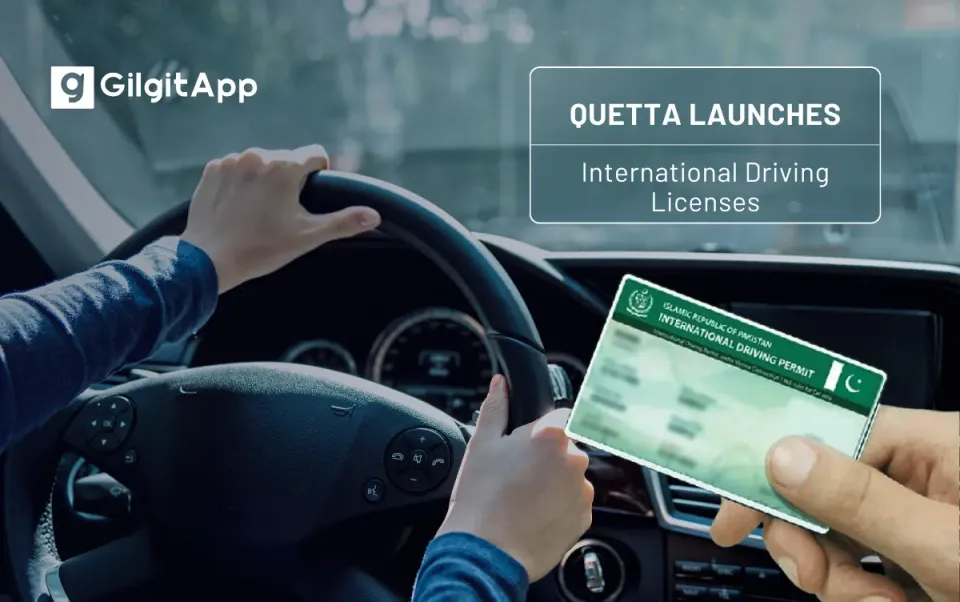Best Practices to Avoid Accidents While Traveling to Northern Pakistan?
Planning a trip to Northern Areas? Discover the vital vehicle precautions for a safe journey - a complete guide for this Summer.

The captivating beauty of Northern Pakistan, particularly the Gilgit Baltistan region, attracts numerous adventurous tourists each year. However, it is crucial to take necessary vehicle precautions to ensure a safe and enjoyable trip to GB avoiding any probable accident.
In this comprehensive guide, we will delve into the importance of vehicle preparations, pre-trip checks, driving precautions, and emergency situations, focusing on essential tips to ensure before your tour to Gilgit Baltistan.
Importance of Vehicle Preparations While Travelling to GB
Traveling in Northern Pakistan is a thrilling experience, but it comes with its own set of challenges. The region's hilly terrains, steep slopes, and winding roads demand extra caution and preparedness. Most tourists are accustomed to driving on flat roads and may find themselves facing unexpected difficulties. To mitigate the risks and ensure a safe journey, taking proper vehicle precautions is of utmost importance.
How Vehicle Precautions Can Mitigate Accidents and Ensure Safety?
By following the recommended vehicle precautions, you can significantly reduce the chances of accidents and ensure the safety of yourself, your passengers, and other road users. These precautions are designed to address common issues encountered by travelers, such as brake failure and inadequate speed control.
What Causes Brake Failure and How Can You Prevent It?
One of the primary causes of accidents in Northern Pakistan especially on Gilgit Baltistan roads is brake failure. Due to the challenging terrain and prolonged use of brakes, they tend to overheat and eventually fail. This can be disastrous, especially on steep descents. To prevent brake failure, it's crucial to adopt alternative strategies for controlling your vehicle's speed.
Why Overusing Brakes on Hilly Roads Can Lead to Failure?
Using your brakes excessively while descending steep hills can lead to overheating, reducing their efficiency and potentially causing them to fail. It's important to understand that even powerful 4x4 SUVs cannot constantly rely on their brakes alone. Relying solely on brakes not only puts you at risk but also endangers the lives of fellow travelers.
How Can You Safely Descend Hills Avoiding Brake Failures?
To avoid excessive use of brakes while descending hills, it's essential to adopt alternative techniques that provide better control and prevent overheating.
If you are driving a manual car, you can effectively control your descent by utilizing the first and second gears. These gears allow the engine to bear the acceleration from gravity, limiting your maximum speed to a safe range of approximately 35-40 km/h.
For those driving automatic cars, engage the 'L' gear or the equivalent setting specifically designed for descending hills. This gear will provide the necessary engine braking, keeping your speed in check and reducing reliance on the brakes.
Some vehicles come equipped with features designed to aid in descending hills safely. These may include engine braking systems, traction control, or hill descent control.
What Techniques Should You Follow to Navigate Curves Safely?
The winding roads of Northern Pakistan often feature sharp curves and bends. It's crucial to approach these curves with caution, as failure to do so can lead to accidents.
Slow down before entering a curve to ensure better control and stability. Remember, it's better to be cautious and avoid overestimating your car's grip than to risk losing control.
How Does Your Engine Helps Control Speed and Improve Safety?
Your engine plays a vital role in controlling your vehicle's speed, especially when driving downhill. Understanding engine braking can help you navigate hilly terrains more effectively and stay safe.
Each gear in your vehicle has a maximum speed limit. By selecting the appropriate gear based on the slope and road conditions, you can control your speed and minimize the need for excessive braking. Consult your vehicle's manual for recommended speed limits for each gear.
Pre-Trip Vehicle Check Before Touring GB
- Tires and Brakes: Check tire condition, inflation levels, inspect the brake system, including pads, discs, and fluid levels.
- Engine and Cooling System: Evaluate engine performance, check for leaks, verify coolant levels and radiator condition.
- Battery and Electrical System: Examine battery health, terminals, connections, test lights, wipers, and horn functionality.
- Fluids and Lubricants: Check and top up engine oil, transmission fluid, brake fluid, verify windshield washer fluid and power steering fluid levels.
- Spare Tire and Emergency Kit: Ensure a fully inflated spare tire and necessary tools.
- Assemble an emergency kit with a flashlight, first aid supplies, and basic repair tools.
Conclusion
As you plan your visit to the breathtaking Northern Pakistan region, taking essential vehicle precautions becomes a crucial aspect of ensuring a safe and enjoyable adventure. By prioritizing pre-trip vehicle checks, driving with caution, and being prepared for emergencies, you can navigate challenging terrains and steep hills with confidence. Embrace the enchanting landscapes and immerse yourself in the rich cultural experiences, all while prioritizing your safety and the preservation of this remarkable region. Have a wonderful journey!




